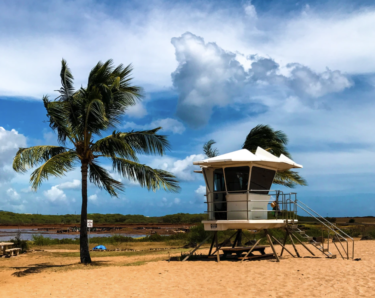はじめに
TED-Ed動画のリストを見て、今日はハワイ王国について知りたいと思った。ハワイといえばカメハメア大王が統一したことぐらいは知っているけど、そこに至る経緯は全く知らなかった。ハワイには新婚旅行の時に行ったきりだけど、真珠湾にも行ったと報告したら、母親が真顔でよくそんな怖いところに行くなあと漏らしたのをよく覚えている。ハワイは白浜で綺麗だし、有名だけど、この砂はオーストラリアのゴールドコーストの砂を大量に運んで作った人工のビーチだ(参考)。今日は、そんなハワイの起源から探ってみたい。
(出典:YouTube)
ハワイの歴史
溶岩に描かれたカハキイ
約50万年前にハワイ島などの新しい島が形成される。北西部の古い島は500万年前から100万年前に形成された。文字を持たない文化だったので歴史文書は存在しないが、溶岩に描かれたカハキイ(ペトログリフ)が残っている。遺跡の年代は紀元前500年前後と考えられている(参考)
ハワイ王国の統一からアメリカ統合までの歴史
カメハメは1世がハワイ王国を統一したが、その後キリスト教の宣教師が政治・経済を仕切るようになり、タイミングを見て狩人が狩りをするようにハワイ王国をアメリカに取り込んでいる。現在、ロシアがウクライナに攻撃を仕掛けているが、同じような図式に見える。
1810年:カメハメハ1世(1758年から1819年)がハワイ諸島を統一してハワイ王国を建国し、初代国王となる。「カ・メハメハ」はハワイ語で孤独な人、静かな人の意味という(出典)。ハワイ王国を治めるため「ママラホエ」と呼ばれる法律を制定した。ヨーロッパの君主制を取り入れた独立立憲君主制となり、ヨーロッパとの接触が増える。
1819年:カメハメハの死後、未成年であった新国王リホリホの摂政として、カメハメハの正妻であるカアフマヌが指名され、カアフマヌ女王となる。
1820年:キリスト教の宣教師が島に到着すると、古い宗教を覆し、ハワイ語を文字にした。ハワイの識字率は19世紀後半には90%を超えた。文字の発達により、国王の権限と義務を明記した憲法が作られた。
1848年:カメハメハ3世により大マーヘレが公布される。土地の98%はアリイ、首長、貴族に割り当てられた。
1853年:1778年当時には12.8万人いた先住民は天然痘などの疫病が蔓延し、1853年には7.1万人、1920年には2.4万人まで減少した。生き残ったのは人里離れた村に住んでいた先住民だった。アメリカ人宣教師は、都市の専門家や商人階級を支配するエリートとして活躍した。砂糖産業を興すために1850年から1900年の間に中国、日本、フィリピン、ポルトガルなどから約20万人の契約労働者がハワイにきた。ハワイは多くの人種が混合した文化を育んだ。
1873年:カウイケアオウリとロットの従兄弟であるウィリアム・ルナリロは、ハワイ初の選挙による君主となる。在位は1873年から1874年。
1874年:ウィリアム・ルナリロの死後、デイヴィッド・カラカウアとカメハメハ4世の妻エマ王妃が選挙で戦う。デイヴィッド・カラカウアが選挙で勝ち、カメハメハ王朝からカラカウア王朝に変わる。
1887年:カラカウア王は、反君主主義の民兵組織のクーデターにより不平等な新憲法を受け入れた。
1891年:カラカウア王の跡を継いだリリウオカラニ女王(Queen Liliʻuokalani)は、新憲法を破棄しようとした。
1893年:ハワイ臣民や外国人居住者により構成される安全委員会により女王は投獄された。
1897年:ニューランド決議によりアメリカがハワイを併合し、ハワイ準州を創設する(7月)。
ハワイの先住民族はどこから来たか
人類はアフリカで始まったとされる。どのようにしてハワイ諸島に辿り着いたのだろう。いくつかの仮説があるようだ(参考)
その2)ラピタ文化:紀元前2000年ごろ中国近辺南部もしくはパプアニューギニア近辺の海の民・ラピタ人がサモア周辺で姿を消しています。彼らの使っていた土器はニューカレドニアで発見されています。近年のDNA分析によりハワイアンと中国南部の民が非常に近しい関係にあることがわかってきました。ラピタ人は日本にも移ってきて縄文人と呼ばれていた人種がそれであるという話もあります。
その3)南米文化:ロノ神の化身の一つともされ、タロと並んで古代ハワイ人の大切な食糧であったuala(サツマイモ)は南米が原産地。プルメリアの原種も南米産ですから、そちらの方向から航海に適した風が吹く時期もあったのかもしれない。
その4)ハワイの由来:ハヴァイキが語源と言う説。伝説の漁師、ハワイイロアから来るという説など諸説あります。ハワイイロアの妻はフアラライ、長男がマウイ、次男がカウアイ、カウアイの妻がワイアレアレ、娘はオアフという伝説があります。
その5)インド文化:ハワイアンのルーツとしてはこれまでインド人というのが最も有力な説でしたが、DNA分析によりこの説は覆されました。仏教世界では釈迦にレイを捧げる風習もあり、インド文化が影響を与えているという説は未だに残っています。
縄文人コネクション仮説
海の民が海流に乗ってポリネシアを移動したという説もある。特に、ミシガン大学のプレイスは頭蓋骨の計測資料の比較から「縄文人コネクション仮説」を1991年に発表している。国内では聞かないけど、海外には、昔から縄文人は環太平洋に広がる海の民という考えがあるようだ。縄文時代には、黒曜石を運ぶために海上300kmも離れた八丈島まで往復している。環太平洋を移動した逞しい祖先がどのような人たちだったのか興味が尽きない。
(出典:ameblo)
ラピタ人とラピタ土器
ラピタ人(Lapita)とは、人類史上初めて遠洋航海を実践し、太平洋の島々に住み着いたと思われる民族だ。1952年にニューカレドニアで発見された土器がラピタ土器と命名された。ラペタとは、ニューカレドニアの現地語では穴を掘ることという意味のハペタア(xapeta’a)を発掘した遺跡と誤解してつけられたという。下の写真(左)は紀元前800年ごろの出土した頭骨から復元したものだ。下の写真(右)は、紀元前1000年ごろの遺跡で復元したものだ。確かに、縄文土器と雰囲気が似ている。

(出典:blog.goo)
10の質問
動画に戻ろう。動画を見終わると10の質問が用意されていた。
Q1) Queen Liliʻuokalani ascended the throne after the death of her brother. What was his name?
リリウオカラニ女王は兄の死後、王位に就きました。弟の名前を尋ねる設問なので、カラカウア(Kalākaua)が正解か。
Q2) American missionaries arrived in Hawaiʻi in:
アメリカ人宣教師がハワイに到着したのはいつという設問だ。音声では分かりにくいけど、画面が一瞬1820と表示されていた。
Q3) The Bayonet Constitution:
バヨネット憲法についての設問だ。これは銃剣憲法とも呼ばれ、一部の裕福なアメリカ系白人がホノルル・ライフルズ」という政治組織をハワイで結成し、この政治組織がカラカウア王を脅し、白人に有利なハワイ新憲法に発布に、1877年7月7日にサインさせた。なので、「君主の権力を奪った(Took away the monarch’s power)」、「多くのハワイ先住民の選挙権を取り上げた(Took away voting rights for many native Hawaiians)」、「強制的に制定された(Was enacted by force)」の全てだ。
Q4) The Committee of Safety joined forces, with U.S. diplomat John L. Stevens and a show of force by the U.S. marines aboard the U.S.S. Boston, to overthrow the Queen because she
安全委員会(The Committee of Safety)は、アメリカの外交官ジョン・L・スティーブンスと、米艦ボストンに乗船していたアメリカ海兵隊の武力行使によって、女王を打倒するために力を合わせました。その理由は何か?という設問だ。これはリリウオカラニ女王が新憲法への署名を希望していたためなので、「Wanted to sign a new constitution」が正解だろう。
Q5) How long was Queen Liliʻuokalani imprisoned in ʻIolani Palace?
リリウオカラニ女王は、イオラニ宮殿にどのくらい幽閉されていたかという設問なので、8ヶ月が正解だ。
Q6) When Queen Liliʻuokalani was jailed, she passed her time by
リリウオカラニ女王が収監されていたとき、彼女はどのように過ごしたかという設問だ。「パッチワークキルトの作成(Making a patchwork quilt)」、「歌を作る(Writing songs)」、「庭の花を包んで持ってきた新聞を読む(Reading newspapers, brought to her wrapped around flowers from her garden)」の全てが正解だ。
Q7) Aloha ʻĀina patriots protested
アロハアフィーナの愛国者たちが抗議したのはどれかという設問だ。答えはハワイ共和国の併合条約への停止なので、他の選択肢(第一次世界大戦、南北戦争、米西戦争)のどれでもないが正解だ。
Q8) Queen Liliʻuokalani was imprisoned in her Palace and then put under house arrest in her home. Why did the Republic of Hawaiʻi go to such extents to punish and silence her?
リリウオカラニ女王は宮殿に幽閉され、さらに自宅でも軟禁された。なぜハワイ共和国はそこまでして彼女を罰し、黙らせようとしたのかという設問だ。アメリカ政府が、ハワイの土地と人々をアメリカの一部として統治する必要があるからです。そして、それは女王を抑圧することが重要であり、そうでなければハワイの人々は従わないためと考えた。英語だと次のような感じか。
Q9) How did Aloha ʻĀina nationalists help Queen Liliʻuokalani stop the Treaty of Annexation?
リリウオカラニ女王が併合条約を阻止するために、アロハʻアティナ民族主義者たちはどのように協力しましたかという設問だ。何千人ものハワイの人々が「Aloha Aina」と書かれた帽子のバンドを付けて抗議したので、英語だと次のような感じか。
Q10) What were some misconceptions you might have had about Hawaiʻi? How does knowing the facts in a historical narrative impact contemporary knowing? How can Queen Liliʻuokalani inspire non-violent political action today?
ハワイについて誤解していたかもしれないことは何ですか?歴史的な物語で事実を知ることは、現代の知ることにどのような影響を与えますか?リリウオカラニ女王は、今日、非暴力的な政治行動をどのように鼓舞することができますか?という設問だ。私はハワイの歴史を知ることでショックを受けています。そして、歴史が繰り返されることを知らざるを得ません。なぜなら、現在、ロシアはウクライナを怒らせているからですと考えたので、英語なら次のような感じか。
まとめ
今回は、ハワイ王国の歴史を考えた。まず宣教師を送り込み、キリスト教の信者を増やし、国の勢力や権限を掌握して、国を乗っ取る。これが欧米が未開の地を制服するマニュアルだ。日本では、それにいち早く気づいた豊臣秀吉や徳川家康がキリスト教を禁じた。宗教をもち、神を信じることは個人の自由だが、それを政治の世界の手段として悪用することは許されない。宗教の問題はまた機会を見て深掘りしたいと思う。
以上
最後まで読んでいただきありがとうございます。
拝
参考:英文スクリプト
It was January 16th, 1895. Two men arrived at Liliuokalani’s door, arrested her, and led her to the room where she would be imprisoned. A group had recently seized power and now confiscated her diaries, ransacked(物色) her house, claimed her lands, and hid her away. Lili’uokalani was Hawaii’s queen. And she ruled through one of the most turbulent periods of its history. 75 years earlier, American missionaries(宣教師) first arrived in Hawaii. They quickly amassed(拡大) power, building businesses and claiming arable(耕作可能な) land that they transformed into plantations.
They worked closely with the Ali’i, or sacred Hawaiian nobility closely linked to the Gods. The ali’i appointed missionaries to government roles where they helped establish Hawaii as a sovereign kingdom(主権王国) with a constitutional monarchy(立憲君主制). But once certain business opportunities emerged – namely, the prospect of exporting sugar to the US tariff-free – some of their descendants shifted positions. They formed a political group known as “the Missionary Part(宣教師派)” and began plotting to annex Hawaii, bringing it under US control. Lili’uokalani and her siblings(兄弟姉妹) were born into an ali’i family. In 1874, her brother, Kalakaua, ascended the throne(王位), but thirteen years into his reign, the emerging threat crystallized. The Missionary Party called a meeting where an all-white militia(民兵) surrounded and forced the king to sign new legislation(法律).
Later called the Bayonet Constitution(バヨネット憲法), it stripped(剥奪) Native Hawaiians of their rights, diminished(弱め) the monarchy’s power, and ceded(委ねる) control to this group of white businessmen. Four years later, King Kalakaua died, heartbroken, Lili’uokalani said, “bu the base ingratitude of the very persons whose fortunes he had made.” Prepared to fight, she assumed the throne(王位). Despite death threats and rumors of insurgency. Queen Lili’uokalani was determined to restore power to her people – an estimated two-thirds of whom had lost their voting rights. Flooded with requests for change, she authored a new constitution. But before she introduced it, the so-called “Committee of Safety(安全委員会)”, a new organization that consisted of many Missionary Party members, hatched(孵化) another plot(陰謀). Under the false pretense(口実) that this new constitution endangered American property and lives, they staged a coup(クーデター) on January 17th, 1893. More than 160 US Marines marched to the palace, where the “Committee of Safety” removed(罷免) Queen Lili’uokalani from office. Thousands of Hawaiian people protested, some wearing hatbands reding, “Aloha ‘Aina”, or “love of the nation(国家への愛)”.
The Alleged “Provisional Government(臨時政府)” declared Hawaii a Republic(共和国) the following year. They proclaimed(宣言した) that Hawaiians couldn’t vote or be government employees without signing a new “oath of allegiance(忠誠の誓い)”. Many refused. The following year, some of Lili’uokalani’s supporters attempted a counterrevolution. The Republic responded brutally(残酷), jailing(投獄) hundreds and sentencing six people to death. In exchange for their release, the Republic made Lili’uokalani sign a document that claimed to relinquish her throne, and they imprisoned(幽閉) her in the palace. Under constant guard, she composed songs expressing her love for her people and began making a patchwork quilt that told the story of her life. While she was only allowed news that had been reviewed by her jailers, her supporters often brought the bouquets from the garden she’d dedicated to them, wrapped in newspaper. After 8 months, Lili’uokalani was placed(軟禁) under house arrest.
As soon as it was lifted, she traveled to Washington, D.C. with Hawaiian nationalists and over 20,000 signatures. There they successfully convinced Congress to halt the Republic’s annexation(併合条約) treaty. But the following year, the Spanish-American War(米西戦争) began. Seeing Hawaii as a strategic military base, President William McKinley declared it a US territory on July 7th, 1898 – breaking international law and devastating Queen Lili’uokarani and her people. She spent the rest of her life petitioning for the restoration of her lands, Native Hawaiian rights, and national liberation. When she died in 1917, these dreams were unrealized. A member of the group that forced Queen Lili’uokalani out of office once declared, “if we are ever to have peace and annexation the first thing to do is obliterate the past.” They failed at this goal. Queen Lili’uokalani left a resilient legacy: Her commitment to her land and people never wavered and many Hawaiians continue to fight in her memory. Speaking of Hawaii’s children, Queen Lili’uolalani said, “ It is for them that I would give the last drop of my blood”.




